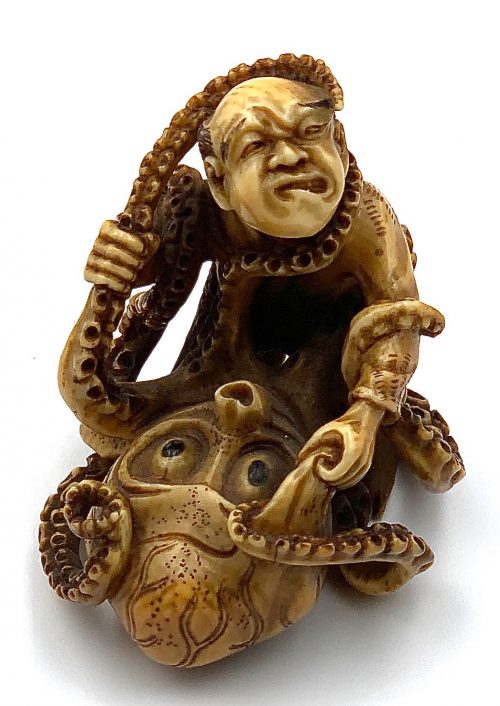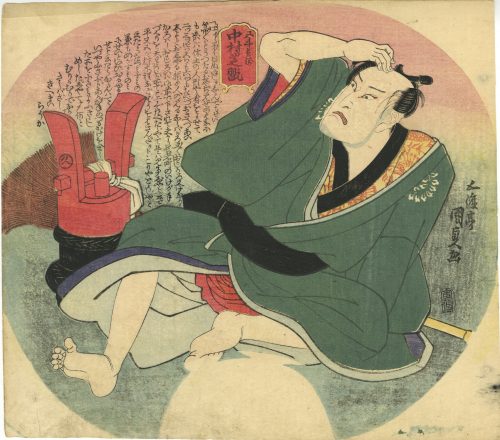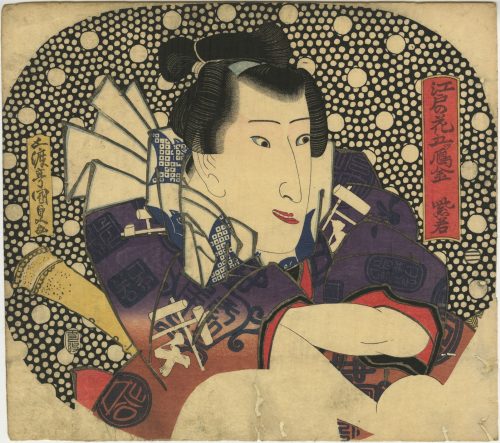
Compton Collection, vol. 2, p. 26-27, №52.


Compton Collection, vol. 2, p. 26-27, №52.


Butterfield & Butterfield, 1979. Sale # 3063, lot № 66.

Size: 71.4 x 70.2 x 5.2 mm.
An association with the Star of David is doubtful if not impossible.
References:
Jacob Pins #547 [p.217] - Ebisu drawing wakamizu, the first water drawn from a well on the New Year. TNM II (Tokyo National Museum Catalogue vol. 2) #1373.

Ivory netsuke with a design of a man (possibly - Ariōmaru) wrestling a giant octopus.
Circa 1850. Dimensions: 45.5 x 48.3 x 37.8 mmUnsigned.


 Horst Graebner also noted that the performance took place at Nakamura Theatre in Edo on Bunsei 13/03 (03/1830) (see Waseda University Cultural Resources Database # 100-4224):
Horst Graebner also noted that the performance took place at Nakamura Theatre in Edo on Bunsei 13/03 (03/1830) (see Waseda University Cultural Resources Database # 100-4224):

Toyokuni II





